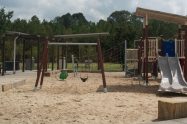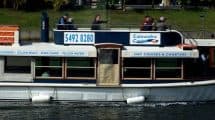Going on the Buderim Historic Walk is the best way to learn about the town’s rich history and cultural significance.
It’s only 3.4km return, so it’s best to allocate around 1.5 hours to complete the journey.
Buderim Historic Walk, Walking Tour, Route Map, Locations, Places, QLD
Next, you’ll be taken to the Krauss Engine on the Lindsay Road Gardens. The Krauss is famous for being the first engine ever used for the Buderim-Palmwoods Tramway, which operated from 1914-1935. The Buderim-Palmwoods Heritage Tramway Inc restored the engine.
The third stop on the Buderim Historic Walk is the Nonmus Sawmill, established by Gilbert Nonmus. This is followed by the Buderim Mountain Sugar Company Mill, financed by a businessman and saw miller hailing from Brisbane named James Campbell. Though it was closed in 1885, it’s still around today. The fifth stop is the Buderim-Palmwoods Tramway Terminus, which was built in 1913. It features an engine and storage shed.
Next, you will be led to the War Memorial Gates, which were established in 1953. The gates were initially constructed out of white beech though they only lasted three decades, after which a metal structure replaced it. After the gates, the next attraction is the Buderim Memorial School, the town’s first school. It’s built on the mountain slopes, though used for practising trench drills during the second world war.
The walk also includes a trip to the old Sion Singh’s Grocery Store, a vital service providing produce for the local community from 1907 onwards. Other landmarks included in the walk are the Methodist Church, School of Arts Park, Buderim Library Building, St. Mark’s Church of England, Middy’s General Store, Vandy’s Garage, Lion’s Park, J&M Underwood Exhaust Manufacturers, Site of South Sea Islander Dwellings, Pioneer Cottage, Second Ginger Factory, and the Pioneer Cottage.
The Buderim Walk is a must-do for history enthusiasts or anyone who wants to learn more about this town’s rich, colourful past.

























































































Do You Have a Question to Ask?